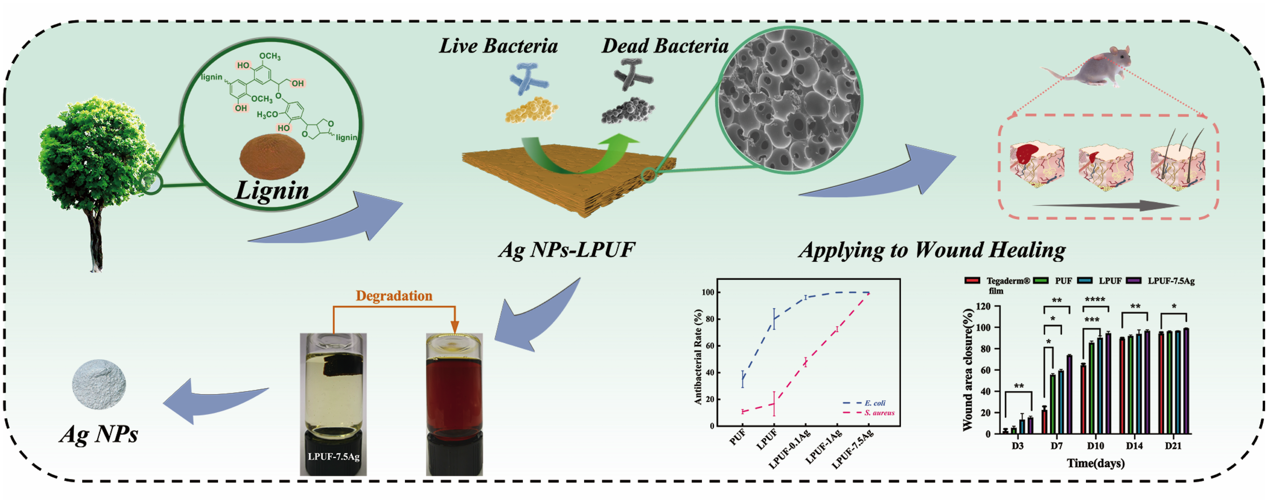A research group led by Prof. Zhu Jin at the Ningbo Institute of Materials Technology and Engineering of Chinese Academy of Sciences, proposed a facile method to prepare antibacterial lignin-based polyurethane/Ag composite foams which facilitates wound healing as wound dressings, in cooperation with Prof. Chen Jing at NIMTE and researchers at Tsinghua University. The research work has been published in Biomacromolecules.
Antibacterial wound dressing is a critical to excessive exudate absorption and wound infection prevention, thus promoting tissue repair. As an effective strategy to prepare high-performance antibacterial wound dressings, the incorporation of polyurethane materials within wound dressings has drawn great attention internationally. However, the dependence on petroleum resources, lack of antibacterial activity, and complex preparation process of traditional polyurethane foams have restricted their efficacy in biomedical applications.
By virtue of a facile one-step foaming and in situ reduction method, researchers at NIMTE prepared lignin-based polyurethane foams as new biomass wound dressings, with a small amount of silver nanoparticles (i.e., Ag NPs) loaded on the skeleton of the composite foam.
The natural compound lignin with metal-reducing ability was applied as a reducing agent to reduce silver ions to Ag NPs in situ during the preparation of polyurethane.
The developed antibacterial lignin-based polyurethane/Ag composite foams with an open porous structure showed enhanced thermal, mechanical and antibacterial properties, as it almost completely (99%) inhibited the growth of Escherichia coli within 1 h and Staphylococcus aureus within 4 h, respectively.
In addition, evaluations in an animal model of mice indicated the prepared foam dressing are effective in promoting new tissue generation and collagen deposition in full-thickness skin wounds, thereby facilitating wound healing.
The research may provide insights into the development of antibacterial polyurethanes dressings for living organisms, and the developed high-performance antibacterial lignin-based composite foams show great potential in large-scale production and clinical applications.
This work was financially supported by the National Key Research and Development Program of China (No. 2017YFE0102300), OCE Project #29983 (Canada), National Natural Science Foundation of China (No. 51803227), S&T Innovation 2025 Major Special Program of Ningbo (No. 2019B10063), Public Welfare Science and Technology Projects of Ningbo (No. 202002N3127), Zhejiang Provincial Natural Science Foundation of China (No. LQ19E030009).

Fig. The synthesis and application of lignin-based polyurethane/Ag composite foams (Image by NIMTE)
Chen Jing
Ningbo Institute of Materials Technology and Engineering
E-mail: chenjing@nimte.ac.cn

